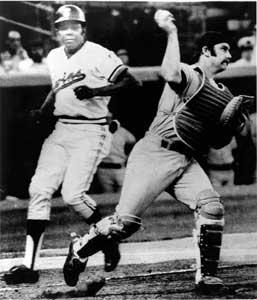quote:
Originally posted by catchaprospect:
heres the trick... you still let the glove give.. but as it hits your glove, you let it give and bring it toward the middle of your body by moving the glove about 6 inches....
One of the most important things I teach my catchers is to learn a whole new way to view the strike zone. A way that is very different then anything thay have ever heard before. A way that if they embrace this idea and technique will answer many questions about why calls go the way they go some times as far as balls and strikes.
The technique is simply, "View the strikezone through the eyes of the umpire."
What I want them to do is view the strikezone as if they are seeing it through a camera mounted on the top of the umpires mask. This camera will show you exactly what the umpire sees, and as important what he hears. You will see what you, the catcher, are doing in front of him, and how you make each pitch look after you catch it.
Now, with that in mind lets follow the umpires view as he tracks the pitch described above to the glove.
The ball leaves the pitchers hand and starts toward the plate. About 30 feet from the plate your view tells you that this pitch will be somewhere from the middle of the plate in toward this right handed batter.
20 feet out you see it will be maybe 6 inches from the edge of the plate to the edge.
10 feet from the plate it is clearly tailing in and you can tell it will be right on the black
Right in front of the plate it keeps tailing in and now it is about 3 inches inside the black.
And then the umpire SEES the ball hit the catchers glove, and HEARS the ball hit the catchers glove, and then SEES the glove move 6 inches toward the middle of the plate.
Remember now...the move of most of the 6 inches happened after you HEARD the ball hit the glove...
Now from the umpires perspective, what does all that glove movement toward the middle of the plate after he heard the ball hit the glove say to him about what then catcher thought about the quality of the pitch...
Remember to reposnd as the umpire with that view.
Anyones thoughts??


